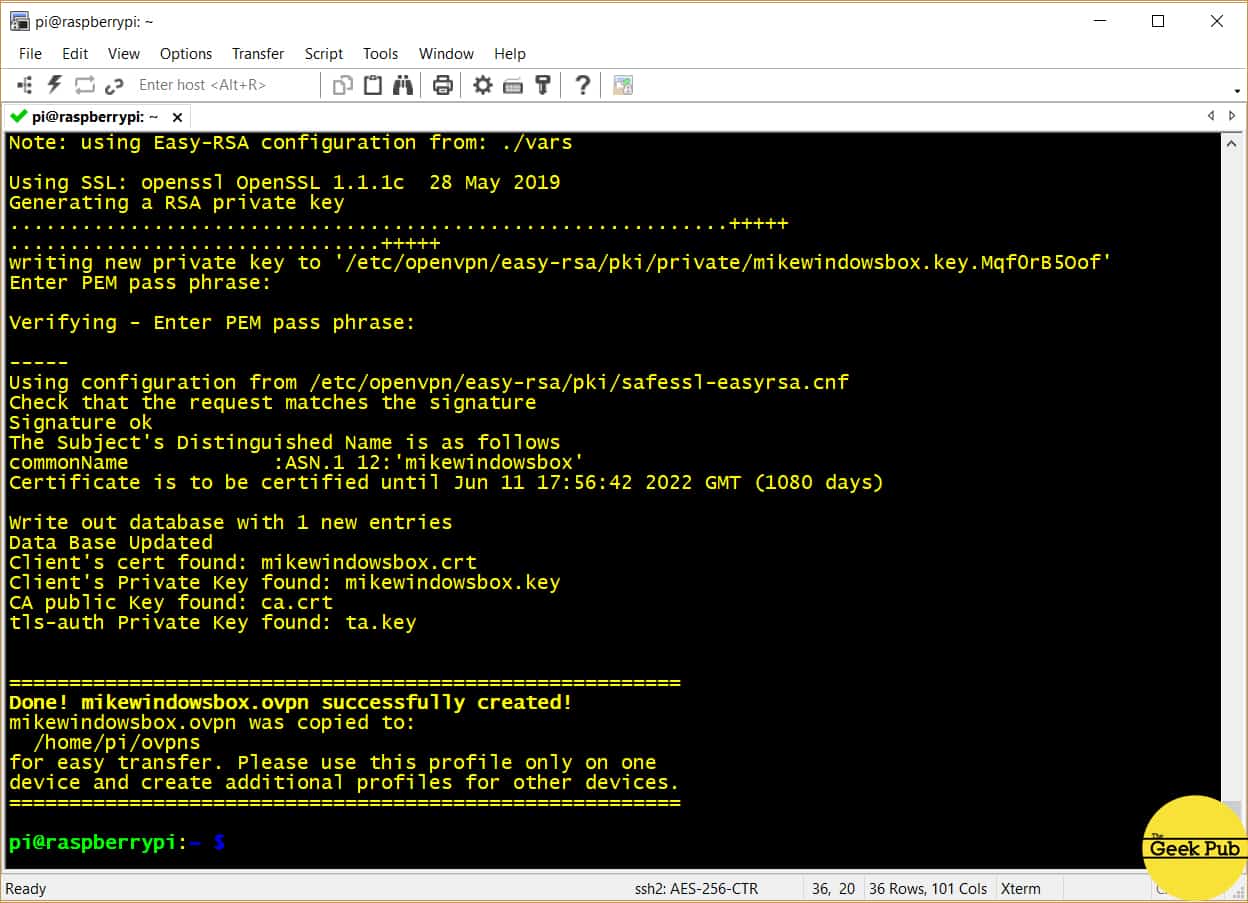
PIA VPN CLIENT RASPBERRY HOW TO
I tried to install wireguard tools but it does not work and would like to access some folders on my office Nas.This How-To explains how to set up a Privateinternetaccess ( PIA) client on FreeBSD using OpenVPN.
PIA VPN CLIENT RASPBERRY MAC
Question 3: if from my remote location I force all traffic to go through the RPI (that will be connected as a client to the server), will I be able to see my office network? I have an old mac that no longer supports wireguard. Question 2: how will I find from my office the remote Qnap Nas? Question 1: do I need to change the DNS on my remote router and set the remote IP local address from my remote RPI as DNS on the remote router? This way, all traffic will be routed thought the RPI (same principle as pihole).

This is the one I was looking for!Īs James, I want to use this system to backup my QNAP Nas to another QNAP Nas outside my office.Īs I do not want to open ports on my remote Nas, I want to set up a wireguard vpn connection from my remote location back to my office wireguard server. This is a very important step that a lot of people miss! Your local network will be unable to connect to your external network if you don’t configure a static route.


To sum up, we are adding the WireGuard Debian installation source and then ensuring that it’s not used for regular Raspberry Pi OS packages. Run the commands below, in this specific order. After you configure the WireGuard server on a Raspberry Pi stored on your local network, the instructions below can be used to configure a Raspberry Pi to automatically connect to that VPN server every time it’s turned on!ġ. The majority of it is done by running a few commands and adding your config file, but there’s very little information online that will show you exactly how to do this. The good news is that it’s very simple to set up and configure. The concept of client devices and server devices isn’t valid which makes accomplishing this task somewhat different than most people are used to. The thing with WireGuard is it’s almost nothing like OpenVPN. I’ve always used OpenVPN for this, but after setting up and configuring WireGuard, I was interested in using WireGuard as my VPN protocol for my off-site backup. Something that runs constantly is the Raspberry Pi I use to backup my Synology NAS off-site.

I use Raspberry Pi devices for various different things with some of them being used off-site.


 0 kommentar(er)
0 kommentar(er)
